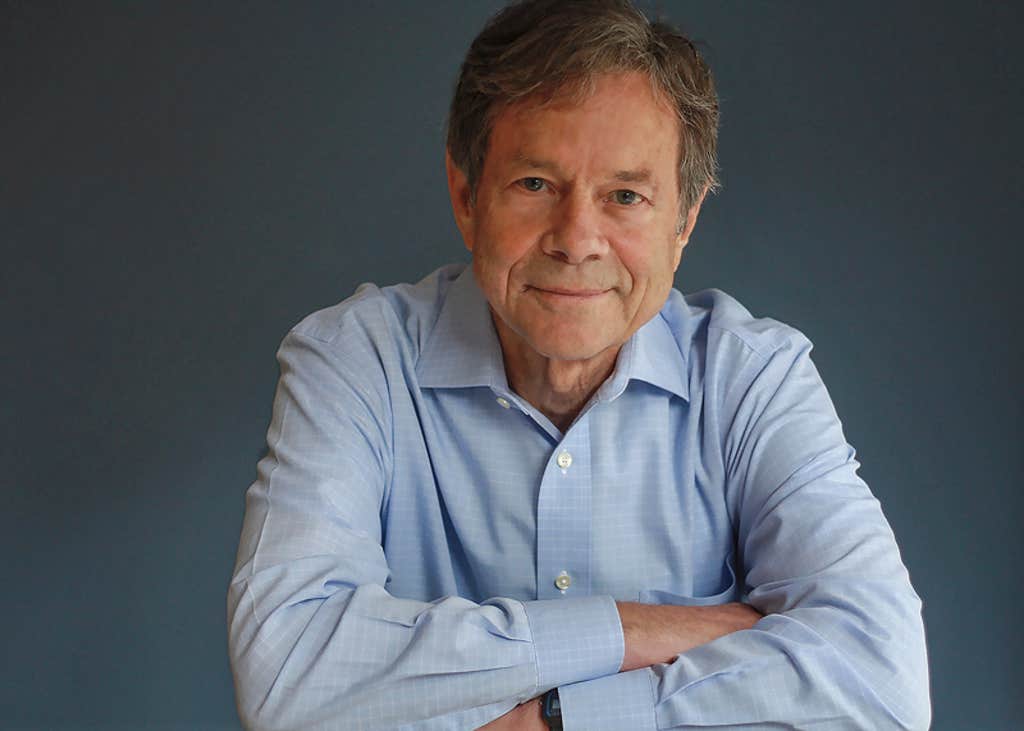Sign up for the free Nautilus newsletter:
science and culture for people who love beautiful writing.
1 Some Phenomena Still Can’t Be Explained
Each chapter of my new book, The Miraculous from the Material, begins with a full-page color photograph of an extraordinary natural phenomenon, like lightning or hummingbirds or the rings of Saturn. It then gives a scientific explanation of the phenomenon and a personal story. What surprised me is that for some phenomena, we understand the basic science, but we still don’t completely understand how the phenomenon works or what causes it.
One example is a weird cloud formation called a mammatus cloud. These clouds have pouches hanging down from their undersides. When you see a mammatus cloud, you can’t believe it’s real. It’s as if it were sculpted or painted by a drugged artist, even though it is completely natural. We know how clouds form: from water vapor evaporating from the warm Earth and rising. The warm water vapor is less dense than the cold upper air and rises due to buoyancy pressures, like those that lift a balloon filled with helium or some other gas lighter than air. And we understand that there are complicated variations of temperature and density within clouds. But we really don’t know exactly what leads to these weird pouches dropping down from the undersides of clouds.
This revelation reinforced my realization that science knows a lot, but it doesn’t know everything, even about purely physical phenomena like mammatus clouds. I must admit that even though I am a scientist myself, I prefer a world in which there are still mysteries.

2 Altruism Exists Online
My book contains 35 high-resolution color photographs of physical phenomena from all over the world. When I was first contemplating the project, I was greatly worried about how I was going to get those photos. To hire a traveling photographer would probably have cost me over $100,000 and possibly more. Then I discovered Unsplash and other online websites that have high quality photographs of a wide range of phenomena, absolutely free. Each photo is taken by a different photographer. All you need to do to use these photographs is credit the photographer, a small thing to ask. It seems that some very accomplished artists are willing to donate their art to the public for free. That revelation is so welcome in our world, where so many people are looking out only for themselves, how to put money in their pockets, and how to advance their reputations and careers.
Though I am a scientist, I prefer a world in which there are still mysteries.
3 Small Wonderments Have Great Power
This book began with an experience I had a few years back. I was jogging by a field early in the morning, I think it was during the fall season, when I noticed a mist hovering about 6 feet off the ground, a beautiful sight. I began wondering what caused that mist and why it could be seen only early in the morning.
After researching that particular phenomenon, I began wondering why the leaves of trees turn to yellows and reds and oranges in the fall. (I live in New England.) I looked into that phenomenon and traced its origins all the way back to a collision between the early Earth and some renegade cosmic debris several billion years ago. (The collision tilted the Earth on its axis, producing the seasons.)
The wonderment over those two phenomena then spawned new wonderments, eventually leading to an entire book of wonderments. I was amazed that from such a small beginning, a single experience, an entire book could emerge. The secret, I think, is to give your mind permission to wander, to snoop around, to satisfy itself. Such freedom is harder and harder to come by in our fast-paced, noisy, and time-driven world. ![]()
Lead art: Cammie Czuchnicki
-
Alan Lightman
Posted on
Alan Lightman earned his Ph.D. in physics from the California Institute of Technology and is the author of seven novels, including the international best seller Einstein’s Dreams. His nonfiction includes The Accidental Universe, and most recently, The Miraculous from the Material. He is currently a professor of the practice of the humanities at MIT. He is the host of the public television series Searching: Our Quest for Meaning in the Age of Science.
Get the Nautilus newsletter
Cutting-edge science, unraveled by the very brightest living thinkers.
Discover more from CaveNews Times
Subscribe to get the latest posts sent to your email.


























![Exploring the Serene Beauty of Nature: A Reflection on [YouTube video title]](https://cavemangardens.art/storage/2024/04/114803-exploring-the-serene-beauty-of-nature-a-reflection-on-youtube-video-title-360x180.jpg)


























